Family Farm. Moshav Nir Israel.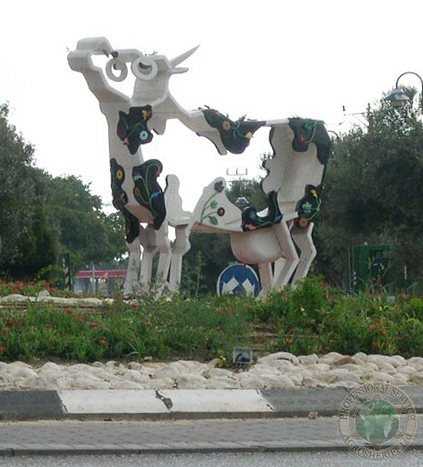
5 kilometers from Ashkelon is moshav Nir Israel.
At the entrance to the moshav there is a stylized steel cow, symbolizing the main specialization of the moshav. Farmers who are engaged in dairy farming live in this moshav. Not all families are engaged in this difficult business, but several strong farms produce milk, and quite successfully.
Using the example of one of these farmers, my old friend Avri, I would like to tell you where the "rivers of milk" in Israel come from. This farm can be considered a typical family farm. Such family dairy farms produce the main volumes of milk in the country.
Dairy farm. Who is there and how many.
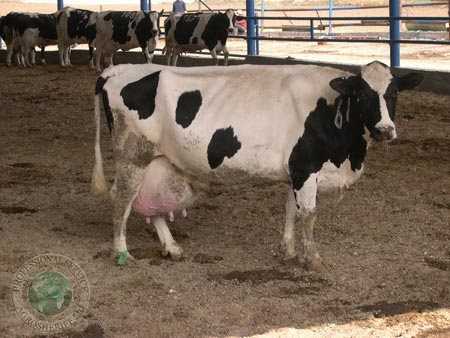 The photo on the left is a classic representative of the dairy herd. This is one of 72 dairy cows. This cow, with her friends, produces 860,000 liters of milk annually. Simple arithmetic allows us to get the result: milk yield per dairy cow is about 12,000 liters of milk per year. This is the standard. If a cow produces less than 10,000 liters per year, it is considered unprofitable, since the cost of feed exceeds the revenue from the sale of milk.
The photo on the left is a classic representative of the dairy herd. This is one of 72 dairy cows. This cow, with her friends, produces 860,000 liters of milk annually. Simple arithmetic allows us to get the result: milk yield per dairy cow is about 12,000 liters of milk per year. This is the standard. If a cow produces less than 10,000 liters per year, it is considered unprofitable, since the cost of feed exceeds the revenue from the sale of milk.
In addition to dairy cows, the farm has 25 cows expecting calves and 35 heads of young animals.
The total number of cows is 132 cows and calves.
The bulls are sold, and the heifers are used to replenish the dairy herd.
In the photo on the right is the younger generation.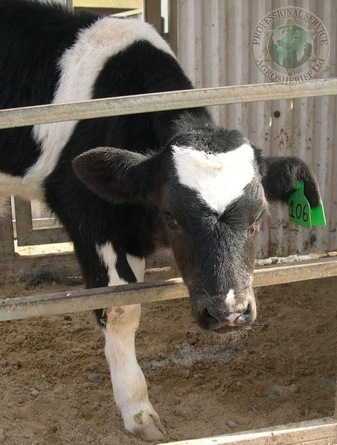
We have sorted out the number of animals. How many people does it take to look after the animals and produce over 800 tons of milk per year?
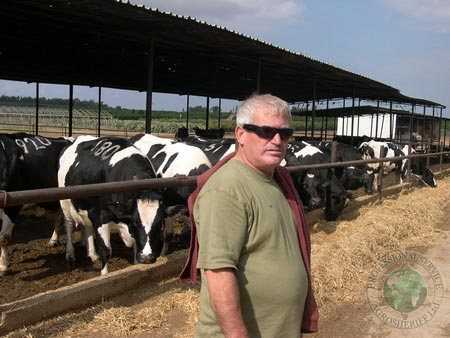 The main person on the farm is the owner, who is also the manager, accountant, milker, etc., etc. His name is Avri.
The main person on the farm is the owner, who is also the manager, accountant, milker, etc., etc. His name is Avri.
The working day begins at 4 am in the summer, at 5 am in the winter, and ends after the evening milking, that is, at 6-7 pm. Besides him, there is one permanent hired worker on the farm, and two sons, Dror and Erez, help their father as much as possible. Dror serves in the army, but in the Israeli army, weekends are sacred, so he can help his father for several hours a week, and Erez helps in his free time from school. That's the entire staff. Avri's parents, Yuda and Rachel, who created this farm in their time, and they started farming back in 1950, grew vegetables, then started with one single cow and, as a result, by the beginning of the 70s of the last century, the farm's specialization became dairy and full-scale.
How do they manage to cope with such a farm? It's very simple. The correct organization of work, equipment and experience help.
What and how to feed the cows.
To get 12 thousand liters of milk from a dairy cow, you need to take care of its correct balanced and complete nutrition. In this, the farmer is helped by a computer, which allows you to calculate the required diet from the available components, and if problems or questions arise, you can always contact a qualified consultant from the livestock breeders association or the Ministry of Agriculture. The consulting assistance of specialists to farmers is very effective in the country and farmers willingly seek help from specialists if problems or questions arise.
There are two options for providing animals with feed. You can order ready-made feed mixtures that will be delivered to the farm at the appointed time and in the required quantities, or you can prepare the feed yourself. Avri buys all the necessary feed components, and roughage and silage are prepared in advance and stored on the farm.
The feed is stored under a canopy. Baled hay, straw, components of concentrated feed - ground grain, corn, meal in separate piles and in bags - mineral and vitamin supplements.
Silage is stored in concrete structures, and covered with a special synthetic material on top, protecting it from rain and sun (in the center). This leaflet, which the farmer always has with him, helps to make a feed mixture for the herd (which components to add and how to add them, in what proportions). In addition to the feed value of various components and the required quantity, the prices are also indicated in the table. Thus, the farmer knows with the help of his computer how much he spent on feed today in monetary terms. This is how the operational balance of expenses and income is constantly monitored.
Feed mill on wheels.
There are two aspects to animal feeding: preparation and distribution of feed. Israeli engineers put a feed mill on wheels and combined preparation and distribution of feed in one self-propelled unit.
This self-propelled unit prepares and distributes feed (photo on the left). The auger loader feeds all feed components, including concentrates, roughage and silage, into the mixing bin (photo in the center). All feed components are automatically weighed and the weight of each loaded component is displayed on the screen of the mini computer installed in the driver's cabin (photo on the right). Thus, the farmer easily controls the weight ratio of all feed components and loads the bunker with the exact required amount of each component.
The feed mill on wheels is made at one of the Israeli factories. It combines feed preparation and distribution in one self-propelled unit.
In the bunker, the feed is evenly mixed by a special auger mixer with knives for grinding coarse feed (photo on the left).
Livestock breeders know what a danger metal objects that can accidentally end up in the feed pose for animals. To protect against such "accidents", special devices equipped with powerful magnets are installed at the dispensing outlet of the feed mixing bunker. These magnets catch metal objects that accidentally end up in the feed. In the photo in the center, a metal fragment is circled, which the magnetic trap clearly caught in the previous batch of distributed feed.
Using such a "feed mill on wheels" saves time and money, resources and labor costs. In short, reliable, profitable, convenient.
Milk.
Milk is the very end product for which this farm exists.
72 dairy cows, which produce almost 15 railway tankers of milk per year, is not bad at all for a farm. Avri could expand it, but there is a problem. A problem with the sale of products. All dairy producers in Israel have quotas for milk production. For Avri's farm, this quota is 800,000 liters of milk per year. What does this mean?
This means that he can sell 800 tons of milk at a price of 1.7 shekels per liter. Each liter of milk produced above the quota will be bought from him for only 0.45 shekels per liter.
Quotas regulate the country's dairy market, protecting it from overproduction. On the one hand, this limits the growth of farms, on the other hand, it allows stabilizing prices and production volumes.
Milking.
The equipment used on the farm can be called almost museum-like. This equipment is about 30 years old. However, it works properly and the milk is of good quality.
The milking parlor, if this semi-open shed can be called that, is designed for the simultaneous milking of 16 cows. Although the milking machines look rather primitive, nevertheless, the equipment meets all the standards accepted in the country, has a computer system for recording the amount of milk, identifying cows and determining the main quality indicators.
The milk is filtered and goes into two stainless steel tanks equipped with a milk cooling system.
The farmer has a contract with the Tnuva company for the supply of milk, and the company's milk tanker collects it from him every day milk.
This is how the country's market is supplied with milk, from which more than 200 types and varieties of dairy products are produced at dairies. The sources of milk rivers originate in small family farms.
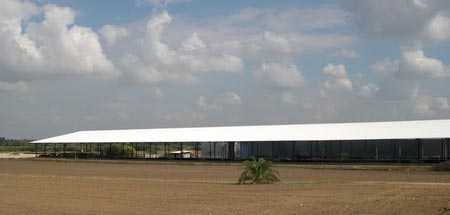
Founders of the family farm Yuda and Rachel
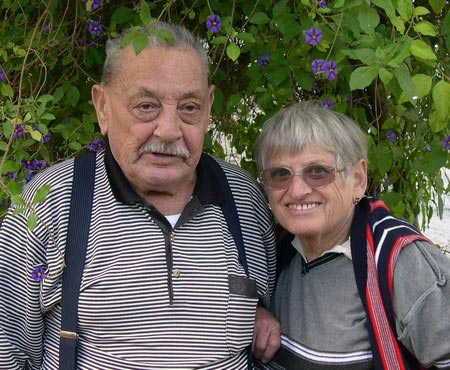
These people went through a terrible life. As teenagers, they ended up in a fascist concentration camp. Miraculously survived. There were very few surviving Jews. After liberation, they had great difficulty getting to the Promised Land. It was very difficult after the war. But they came to Israel. They settled in Moshav Nir Israel, got married and began hard work on the land. They grew vegetables, then created a dairy farm. And this farm became a reliable business and economic foundation for their family, children, and now grandchildren and great-grandchildren.
Gratitude, honor and glory to people like Rachel and Judah.
People like them built, created the wonderful country of Israel practically from scratch.
Moshav Nir Israel is located in the northern part of the Negev desert.
Video about livestock farming in Israel.